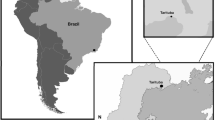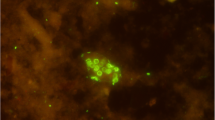Abstract
Molluscan shellfish can recover and concentrate environmentally derived waterborne pathogens and can be used for the sanitary assessment of water quality. Oocysts of Cryptosporidium parvum (genotype 1) were identified in zebra mussels (Dreissena polymorpha) from the St. Lawrence River, Quebec. Approximately 67 oocysts/ml of hemolymph and 129 oocysts/g of soft tissue were recovered. The adjusted concentration of oocysts per gram of tissue was 2.2 × 102, and approximately 4.4 × 102 oocysts were recovered from a single mussel. Zebra mussels can serve as biological indicators of waterborne contamination with Cryptosporidium.
Similar content being viewed by others
Author information
Authors and Affiliations
Additional information
Received: 22 May 2000 / Accepted: 17 July 2000
Rights and permissions
About this article
Cite this article
Graczyk, T., Marcogliese, D., de Lafontaine, Y. et al. Cryptosporidium parvum oocysts in zebra mussels (Dreissena polymorpha): evidence from the St. Lawrence River. Parasitol Res 87, 231–234 (2001). https://doi.org/10.1007/s004360000293
Issue Date:
DOI: https://doi.org/10.1007/s004360000293




